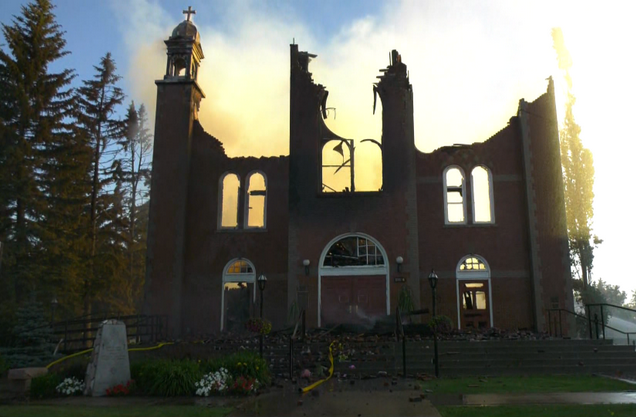Native peoples have lived in Canada for more than 40,000 years. North America was inhabited by an estimated two million people before the arrival of Europeans.
The birth of Canada as a nation is linked to the extension of the settler population from coast to coast north of the 49th parallel, and the confinement of the Indigenous population to reserves. The nascent state, Canada (1867), embarked on a policy of aggressive assimilation of the Indigenous into Canadian society. One politician in particular at that time described that policy as “Killing the Indian in the child.” The report at the origin of this policy, Davin Report, states in 1879 : « Indian culture is a contradiction in terms, they are uncivilized. The aim of education is to destroy the Indian. » The residential schools, were run by different church denominations, mostly Catholic, and financed by the state. All children from Indigenous families were obliged to attend them, between the ages of 3 and 17.
Residential schools operated for 125 years, the last one closing in 1996. In them, the infant mortality rate was well above the average at the time, and atrocious abuses were committed in some of them.
Today, what this system entailed is coming to light ; the unmarked graves recently found in Kamloops and Cowessess are possibly only the first of many to come to light. The headlines about them are justifiably shocking.

All the abuse that the Residential School system entailed and the atrocities committed are historical facts that make us ashamed, redden our faces and cause us immeasurable pain. We would like not to have to look at this reality, but the first step on any positive path is to choose to know, to listen, to name bluntly what happened and the damage it caused. As Pope Francis rightly says in Fratelli Tutti no. 249 : "We can never move forward without remembering the past ; we do not progress without an honest and unclouded memory.”
On a human level we can understand the anger that the facts that come to light provoke. However, the burning of churches that are taking place serves only to feed a resentment that sickens the personal and collective soul. What we cannot do is miss the opportunity to reflect and learn what we need to learn.
Lucie Leduc, Executive Director of the Star of the North Retreat House where I work, in the face of the pain caused by the burning of the century-old church where she and her family celebrated all the sacraments, from baptisms to weddings, shared a deep reflection : « This pain I feel leads me to think of what the Indigenous peoples must have suffered when they were forbidden to speak their language, have their celebrations, celebrate their religious rites, when their culture was denied, ’burned’ ».

We will have learned something if we are able to put ourselves in the place of others, to feel their pain, to be ashamed of the fact that we, as a Church, were complicit in a flawed system, and if we make a journey of conversion that purifies us and strips us of everything we need to be stripped of. If we look at Jesus, he was born in simplicity, in poverty ; there he grew up and there he acquired all his wisdom, observing and learning from the life of the women and men with whom he lived, recognizing God in everything, in nature, in daily gestures, in himself. His entire public life was spent in precariousness, being itinerant, without any power. He was characterized by mercy, compassion, and a heart moved by the pain of others. His earthly life ended up on the cross, stripped of all dignity and power. With this horizon, the present moment is an invitation to purify ourselves of so much of that power structure in which we have falsely wrapped ourselves, and to purify ourselves of everything that is not at the service of mercy. We have many clothes to shed.
As Leonardo Boff says, it is not enough just to be good people (feeling as such comes to a great extent from knowing that we are in tune with the dominant system of the moment) ; what God wants and Jesus showed us, is mercy, compassion. This is an opportunity for purification, to live compassion, to let our hearts be moved by the pain of others. It will be listening to the pain of the Indigenous peoples that will purify us. Regret for the pain caused ought to lead inescapably to a commitment to reparation, to the maximum extent that we can. And the best thing that can happen to us is that those to whom we have caused so much pain, offer us their welcome, their forgiveness. There is no greater blessing we can receive. Fratelli Tutti wisely writes in n. 251 : “Those who truly forgive do not forget. Instead, they choose not to yield to the same destructive force that caused them so much suffering.” This is what I find in the Indigenous People of Sacred Heart of the First People parish in Edmonton with whom I share the celebration every Sunday. They are living examples of this redemptive forgiveness, an invitation to memory and reconciliation.

Spirituality is not something private ; the social dimension is constitutive of faith in the God of Jesus. Resurrection also has its communitarian dimension ; it does not happen only at the individual level - we are called to rise together. At this moment, in Canada, we can only walk towards that moment of life after death hand in hand with our First Nations brothers and sisters. They are our mentors and our guides.

